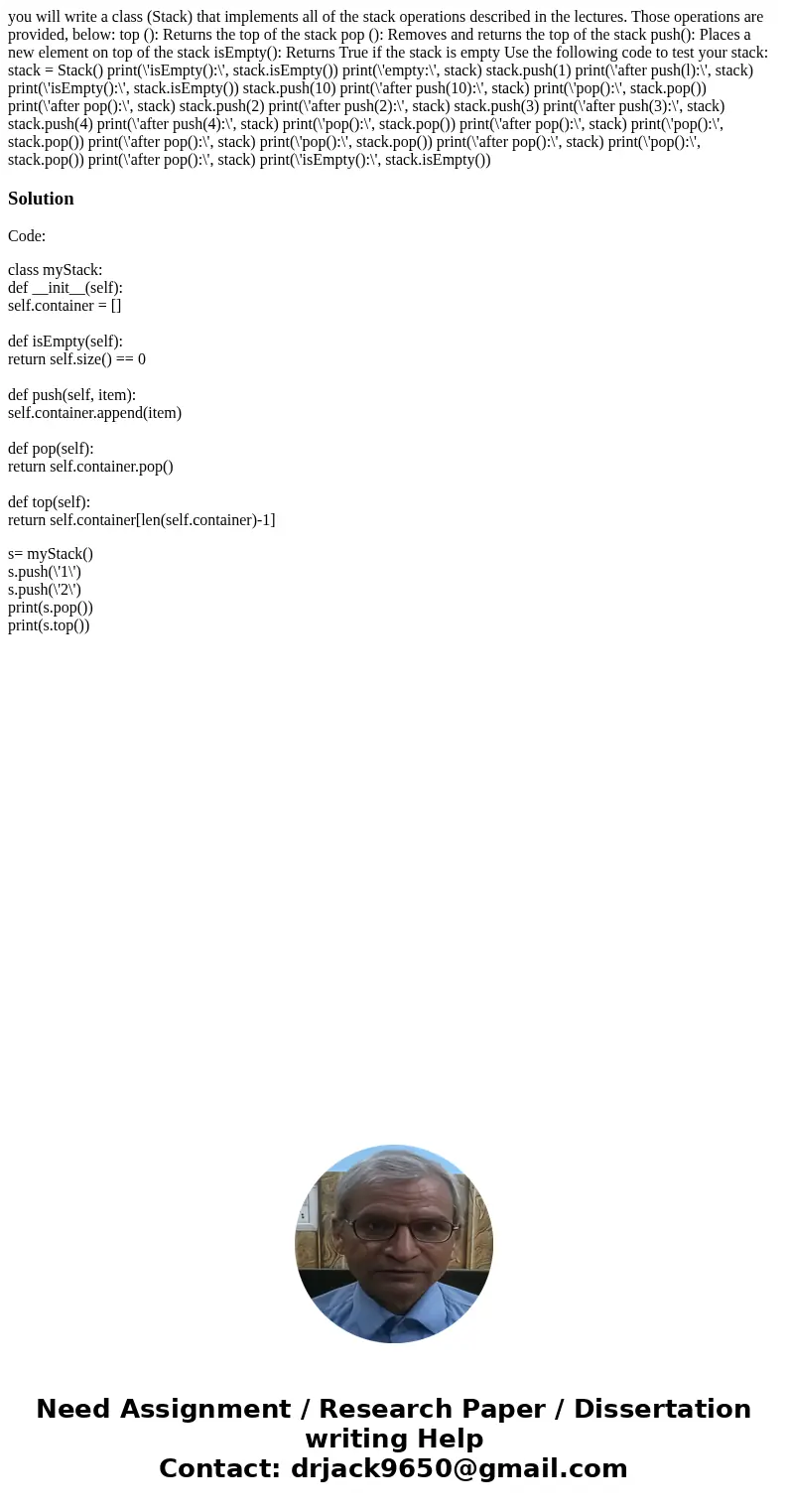you will write a class Stack that implements all of the stac
you will write a class (Stack) that implements all of the stack operations described in the lectures. Those operations are provided, below: top (): Returns the top of the stack pop (): Removes and returns the top of the stack push(): Places a new element on top of the stack isEmpty(): Returns True if the stack is empty Use the following code to test your stack: stack = Stack() print(\'isEmpty():\', stack.isEmpty()) print(\'empty:\', stack) stack.push(1) print(\'after push(l):\', stack) print(\'isEmpty():\', stack.isEmpty()) stack.push(10) print(\'after push(10):\', stack) print(\'pop():\', stack.pop()) print(\'after pop():\', stack) stack.push(2) print(\'after push(2):\', stack) stack.push(3) print(\'after push(3):\', stack) stack.push(4) print(\'after push(4):\', stack) print(\'pop():\', stack.pop()) print(\'after pop():\', stack) print(\'pop():\', stack.pop()) print(\'after pop():\', stack) print(\'pop():\', stack.pop()) print(\'after pop():\', stack) print(\'pop():\', stack.pop()) print(\'after pop():\', stack) print(\'isEmpty():\', stack.isEmpty())
Solution
Code:
class myStack:
def __init__(self):
self.container = []
def isEmpty(self):
return self.size() == 0
def push(self, item):
self.container.append(item)
def pop(self):
return self.container.pop()
def top(self):
return self.container[len(self.container)-1]
s= myStack()
s.push(\'1\')
s.push(\'2\')
print(s.pop())
print(s.top())

 Homework Sourse
Homework Sourse